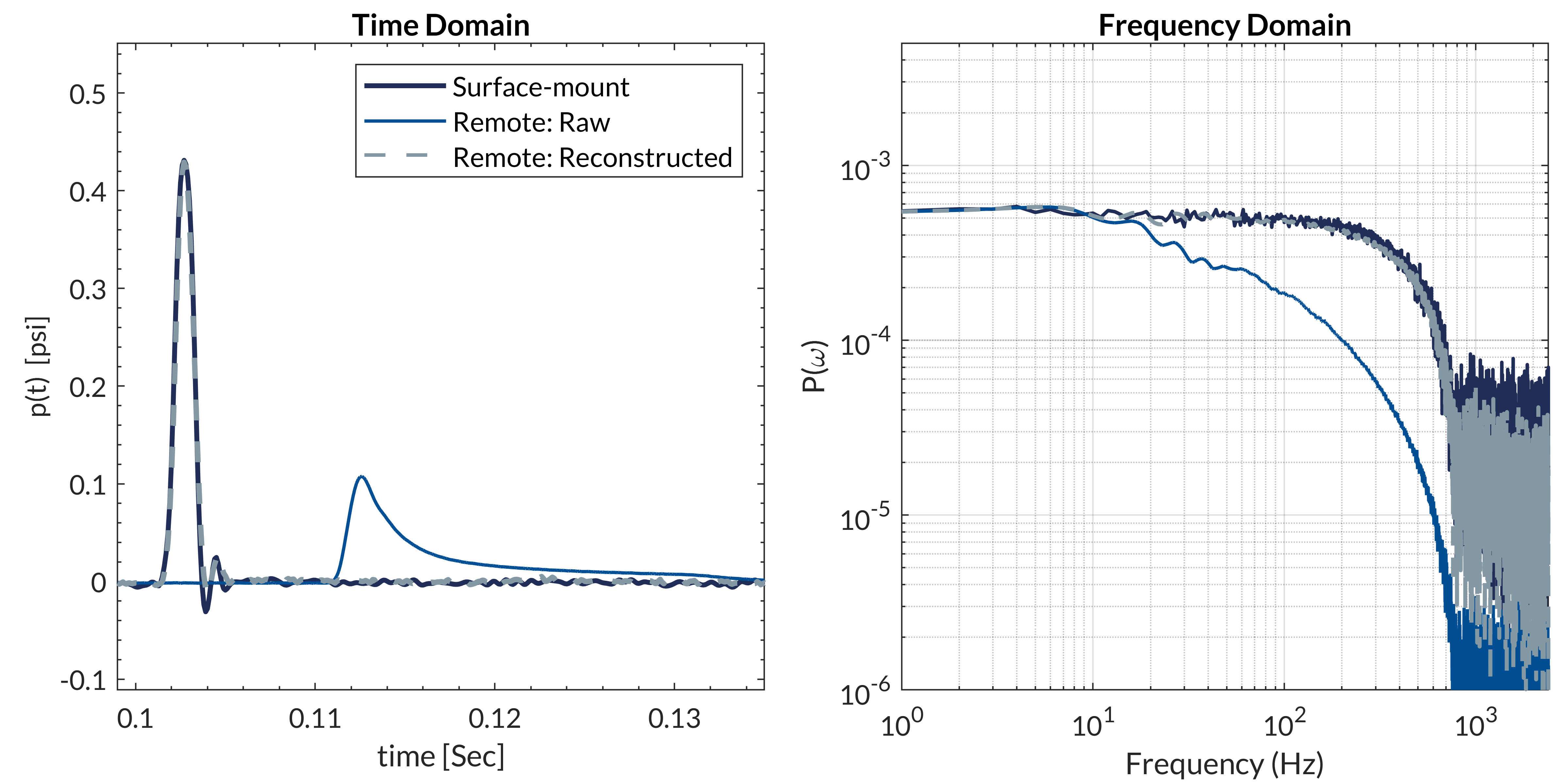Problem: Dynamic Pressure Measurement using Remote Mount Pressure Transducers and Scanners
In many engineering applications, it is beneficial to mount the pressure transducer away from the measurement point. Plastic or metallic tubes are often used for such configurations.
The tubing provides isolation from heat, humidity, contamination, shock, and physical contact. However, the pneumatic distortion (time lag and amplitude) due to the tubing between the sensing module and surface port limits the usefulness of such measurements to averaged, steady data only. This issue has restricted the application of pressure scanners for unsteady pressure measurements in wind tunnel and flight-testing applications.


Solution: Pressure Signal Reconstruction
Our technology is a tubing response characterization that corrects for the pneumatic distortion of the pressure sensor and tubing configuration while dampening system noise.
By combining state-of-the-art data acquisition electronics, proprietary digital signal processing, and an innovative in-situ tubing-response characterization system, we accurately reconstruct distorted, unsteady pressure signals. For long pneumatic lines (up to 1 m), pressure fluctuations are resolved up to 1kHz, fast enough to capture the highly dynamic features of the flow.

This robust and cost-effective approach enables accurate unsteady pressure measurement in advanced aerodynamic applications where direct-mount miniature pressure transducers cannot be used due to high cost, fragility, or possibility of failure.


It is commonly presumed that reducing the tubing length would minimize distortions caused by the tubing system. While this argument is valid from the perspective of the measurement time delay (or phase lag in frequency domain), it is not always valid for the distortions caused in the amplitude of the measurements. It is important to note that the tubing system response is a function of multiple physical phenomena including friction and acoustic resonance. While reducing the length of the tubing system can significantly reduce the friction losses, hence reducing the attenuation in the output signal, the reduced length can induce resonance in the system response and distort the measurements through amplification.
The system response reconstruction technique developed by our team of engineers can compensate for different physical effects in the tubing system and provide accurate prediction of the unsteady pressure signal at the surface of the model based on the remote measurements.
Hardware: Flexible Data Acquisition Platform
Resono's data acquisition and instrument control system, Presa, provides a flexible platform for communicating with pressure scanners, high-speed pressure transducers, and other third-party flow diagnostic instrumentation. To enable time-resolved unsteady pressure measurements, high-speed digital addressing and A/D conversion is provided, enabling Resono's system to be deployed independently in any wind tunnel laboratory environment.
Our Pulsar hand-held device helps users to characterize the phase and frequency response of each tap/tubing system. Pulsar generates and simultaneously samples a pressure signal with known frequency content (the dynamic characterization pressure signal). The measurements acquired on both the remotely mounted pressure sensor located at the end of the tubing and a reference transducer inside the Pulsar are then used to fully characterize the dynamic response of the tap/tubing system.
Software: Adaptable and Accurate Data Acquisition and Processing
Our Pmax software consists of two main modules. A data acquisition module and an analysis module. The data acquisition module helps users to acquire time-accurate pressure measurements reliably. Once data is acquired in a measurement scenario, the data analysis module enables the user to apply the necessary corrections on the unsteady pressure measurements to correct for the distortions caused by the pneumatic tubing and perform other necessary data processing tasks including uncertainty analysis.


